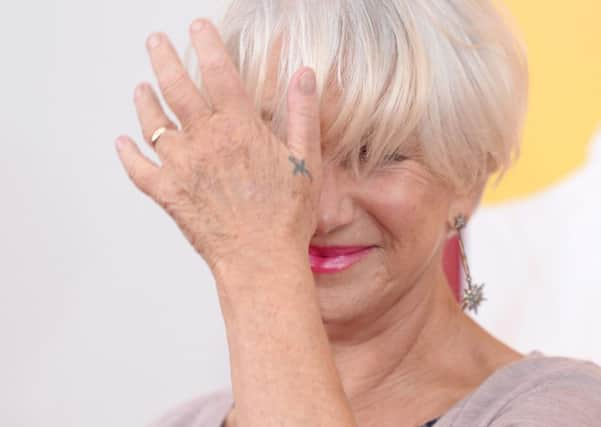Lori Anderson: Tattoo revolution is complete


Tattoos are very much verboten in the Old Testament, but PC – Post Calvary, the new happy clappy Jesus was up for anything. What would you choose? I’d have my initials etched into my velum, less rampant narcissism and more of a really, really tiny haiku to my favourite city.
The reason that I’m raising the subject with readers of The Scotsman is that tattoos are no longer the leitmotif of the lower classes, all of the posh totty sport them now – Helen Mirren, Sienna Miller, Sam Cam, I bet they even have them now in Moray Place, buried under the subterranean gloom of Johnstons’ cashmere socks.
Advertisement
Hide AdAdvertisement
Hide AdThe revelation that inky tattoos have risen up the social ladder has come from a new survey which stated that one is more likely to spot a tattoo on a person who considers themselves middle class than someone who thinks of themselves as working class.
According to Aman Malhorta, a research assistant at Harris Interactive, who carried out the study: “The tattoo appears to have transcended ‘traditional’ class boundaries.” A survey of 2,000 people across Britain, one which spanned the social classes, found 28 per cent of the “middle classes” admitting to one or more tattoos compared to just 27 per cent of the “working class”.
For the middle classes the reason for getting a tattoo is that: “Oh, er, this is a bit edgy” sensation. Money can’t buy that sort of frisson over 40 – well it can, but that’s another column. I can imagine the latest recruit to the tattooed army coming home in the family Audi playing: Walk on the Wild Side on repeat while lightly stroking their newly cling-filmed shoulder.
Now what would they have chosen? That weary staple of the inky ingenue, the ethnic script, if not in your heritage, is the saddest of all tattoos. You have no idea if it’s saying: “I think therefore I am” in Hindi or “I love Spam’’. It may give you the patina of well-travelled exoticism but being inked in Leith doesn’t make you Richard Burton. (If you’re thinking of Liz’s ex then do please carry on.)
The tattoo, like a colourfully inked ouroboros, has come back to where it started in Britain – among the moneyed classes. After Joseph Banks, the naturalist on board Captain Cook’s HMS Endeavour coined the term “tattoo” in 1771 to describe the painted men of Samoa, it was only the most affluent and daring in British society who could afford to copy them. During the 19th century, the tattoo became popular with sailors while in the early 20th century they were the inky badge of both criminals and the counter-culture. In the late 19th century, Lady Randolph Churchill, Winston’s American mother, left polite society spluttering into their lace handkerchiefs when it slithered out that she had a snake tattooed on her wrist.
Today, the wife of the Prime Minister can confidently strut into any function at 10 Downing Street with a dolphin pirouetting over her ankle bone.
If you’ve ever wondered why tattoos are permanent, I would like to point you in the direction of an informative little video by TED, which explains that tattoos are actually infections that our bodies go on fighting forever. The tattooist’s needle plunges through the epidermis, the outer layer of skin and pushes the ink into the dermis, which is a layer of nerves and blood vessels.
The video explains: “Every time the needle penetrates it causes a wound that alerts the body to begin the inflammatory process.” Special immune cells called macrophages then speed to the site of the first prick of “M” for “Mother” and heroically hurl themselves into the path of the inky dye and absorb it.
Advertisement
Hide AdAdvertisement
Hide AdThe rest of the dye is soaked up by other cells called fibroblasts and it is both the fibroblasts and macrophages, now illuminated in colour like submerged neon signs of DNA, that radiate up through the skin to reveal the letters and design.
I’ve often wondered why we choose to mark ourselves in an indelible way. After all, we’ve been doing it for millennia, with the earliest tattoos of northern Europeans applied with ground charcoal instead of ink. In the past, one of the ways in which women marked events in their lives, was by keeping a charm bracelet, which would become a linear silver thread of a lifetime’s experiences – today we are more likely to ink another design on our body.
The past 20 years have seen any social stigma associated with tattoos fade away, when Judy Steel, the wife of Lord David Steel, celebrated her 70th birthday with an appointment at the tattoo parlour, it was clear that the tattoo as a mark of an outlaw was over. The human stain is here to stay.